A hydrangea tree is an excellent addition to many gardens and landscapes. Their bright, full blooms add color and vibrance, making them the perfect choice for a feature piece. There are several varieties of hydrangeas that include both shrubs or bushes and trees. Colors range from white to bright red, blue, pink, and purple. They are hardy, easy to grow plants that thrive well in hardiness zones 5-8.
While there are many types of hydrangea plants only the paniculate variety are used to make hydrangea trees. During early growth they are pruned into a single trunk tree rather than left to grow as a shrub with multiple stems. Since they bloom on new growth every year they dependably come back bright and beautiful even after multiple trimmings.
Care for both hydrangea trees and hydrangea bushes is relatively similar. For this particular article we will specifically provide instruction and tips for the care of your hydrangea tree. We’ll start from the beginning stages of planting to pruning and trimming tips for winter and everything in between including sunlight, soil type, and watering advice.
Choosing
Before you can begin planting your hydrangea tree you first need to find one. Some of the most popular varieties include the Limelight, Quick Fire, and Vanilla Strawberry. These can typically be located at your local greenhouse and will likely already be in tree form so you will not have to worry about pruning it correctly.
Once you have your chosen hydrangea tree home, the planting can begin. Unless you have a specific place in mind to plant your tree, it is suggested that hydrangeas be placed in a spot that gets at least four hours of sunlight during the day. However, if possible, the majority of this sun should not be during the hottest part of the afternoon.
Ideally the east side of the home or a building is best, as your tree will receive shade while the late afternoon sun is the hottest. If the ideal placement of the tree is in an area that is less sheltered, look for a variety that is more heat tolerant such as the Quick Fire or Vanilla Strawberry. Or plant near some other trees that may provide the shade it needs.
Planting
The best time to plant your hydrangea tree is in the early spring or fall. Hydrangeas purchased at a nursery may not have very many leaves even sprouting yet, but this is ok. You want the tree to have time to establish strong roots before it begins its long blooming season. It is also a good idea to plant the tree while it is still cool, during the morning or late afternoon if possible. This will keep your hydrangea from being stressed by the heat.
Hydrangeas prefer to be planted in soil with plenty of moisture, but the area should also be well-drained. While they prefer not to dry out, they are also not fans of standing water. You will want to keep a close eye on the moisture level, especially during the tree’s first year in its new home. This will help the root system become more well-established.
Another tip for planting your hydrangea tree is to provide it some extra support during the first one or two years of growth. This will help ensure that the tree grows up straight and will also help protect it in case of a strong wind. Two or three posts in the ground attached to the tree via some string will do the job so the tree cannot move too far sideways. You do want to be careful to not stake it too tight however so that it struggles to form good roots. There should be a little bit of flex in the trunk.
Finally, when planting your tree the hole you dig should be about 2 feet wider than the root ball and about the same depth as the ball. The tree should be about the same level or slightly higher than the soil surrounding it. After planting add some extra fertile soil and create a slight mound around the base. This will compensate for any settling and also increase water drainage away from the trunk.
Soil
One of the great things about a hydrangea tree is that it tolerates most soil types. Soil can be acid or alkaline but depending on the color and type of hydrangea, slightly acidic soil is typically more favored. The most important thing to remember about the soil around your hydrangea is that it be well drained and kept at a medium level of moisture. It also helps to make sure the soil have a good amount of organic material.
Sunlight
Hydrangeas grow best in full sun to part shade. Tree versions actually require more sunlight than standard shrubs. The success of their blooms is directly related to the amount of sun they receive. Too much shade can keep them from blooming, but too much direct afternoon heat can also shorten their blooming time. The best time for them to be in shade is during the hottest part of the day, typically late afternoon.
Most hydrangeas can thrive with between 4-6 hours of sun. Again, this will depend on their location and what time of day the sun is directly on them. Trees planted in areas further north with colder temperatures can benefit from six hours of sunlight while those in warmer, southern locations might only need 3.
Water
Hydrangea trees like water but they do not love it enough to be left sitting in it. While they need to be kept consistently moist, the soil surrounding them also needs to be well drained. Roots that are too wet will rot and your tree will die. However, trees that are in full sun and heat may need to be irrigated throughout the summer, so the leaves don’t wilt.
A good rule of thumb is to deeply water new trees 3 times a week for sufficient root growth. After that they can be watered approximately 1 inch per week during the spring growing season and then just a deep watering once a week. If the weather is dry or hot your hydrangea may need more water.
Fertilizer
The timing, type, and amount of fertilizer you give your hydrangea tree will vary greatly depending on its variety. For the most part, hydrangeas benefit from being fertilized twice a year, first after pruning in the early spring and once more right after it is finished blooming. During initial planting it is a good idea to add a slow-release fertilizer to the surrounding soil, one that is all-purpose and stimulates root growth along with a lot of organic matter.
Since most hydrangea trees are the panicle variety they will benefit most from an April and June application. Other types like bigleaf hydrangeas need fertilizer three times a year in March, May, and June while other varieties such as smooth hydrangea plants, which are typically shrubs only need fertilized in late winter.
The type of fertilizer you choose can be influenced greatly by the bloom color you want on your hydrangea tree. Bloom color is determined largely by the soil pH, especially in varieties that bloom pink or blue. And soil pH is directly affected by the fertilizer you use. The only really reliable method of determining your soil levels is through a soil test. The acid or alkaline levels will help you decide what trace elements should be incorporated in the fertilizer. Some fertilizers are formulated specifically for shrubs and trees and are ideal for use on hydrangeas.
As a general rule of thumb – do not fertilize your hydrangea trees after August. In the fall the trees start preparing for winter dormancy. Fertilizer only stimulates new growth that will not survive cold winter temperatures.
Trimming and Pruning
Hydrangeas are deciduous trees that lose their leaves in the winter and become dormant. During dormancy is the best time for pruning or trimming as it will not cause any problems with disrupting new growth and blooming. While it is not a necessity to prune your hydrangea tree, it does help to control their shape and also encourages new growth which leads to more buds and bigger blooms in the new season.
Most hydrangeas, especially the paniculate varieties that are perfect for trees, bloom on the new season’s growth. This is why it is important to do all trimming in the winter after it is done flowering for the season or in the early spring before any new growth begins. Typically, new shoots will begin to sprout shortly after spring thaw. Early fall is not a good time to trim, especially on recently planted trees, as the twigs left behind will support the roots during a cold winter.
Other tips for encouraging new growth include opting out of any trimming or pruning during the first year or two after the tree as been planted. Hydrangeas need this time to form their true shape. Hydrangea blooms make beautiful cut flowers for vases and arrangements. Use this as an opportunity to encourage new growth and blooms all through the fall. However, early fall blooms should be left to wilt on their own so new growth does not occur too close to the first freeze.
Acid
One unique feature of a hydrangea tree or bush is that you can control the color of their blooms. Blooms come in a wide range of color from pink, lavender, green, white or even red. Their color can be greatly affected by the type of soil in which they are planted and the type of fertilizer that is used. There are some varieties that are unaffected by color adjustments, especially those with white blooms, while Bigleaf and H. macrophylla are two that can be readily changed.
The pH level in the soil is the factor that changes the color of your hydrangea blooms. Soils that are more alkaline with a pH of 6 or higher typically produce pink blooms. Soils that are more acidic with a pH of 4.5 to 5.5 typically produce blue blooms. If you are unsure of the pH you can easily test it with a pH soil testing kit.
If you decide you want your hydrangea to bloom a bluer hue you will need to lower pH levels by adding aluminum or aluminum sulfate to your soil. Sulfur or peat moss can also be used to increase acidity and lower the pH. Flowers will turn more pink or red by making the soil more alkaline. This can be accomplished by increasing the pH level with ground limestone. Store bought products such as Miracid can also be used to increase acidity for blue blooms. It is important to add these elements sparingly and dilute them well so you do not damage or scorch your plant.


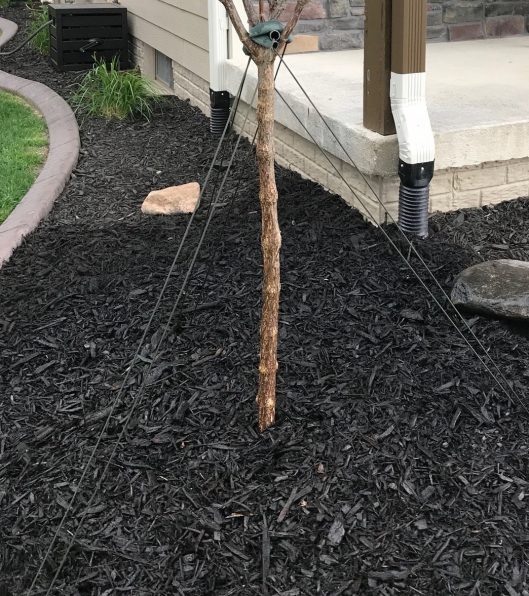
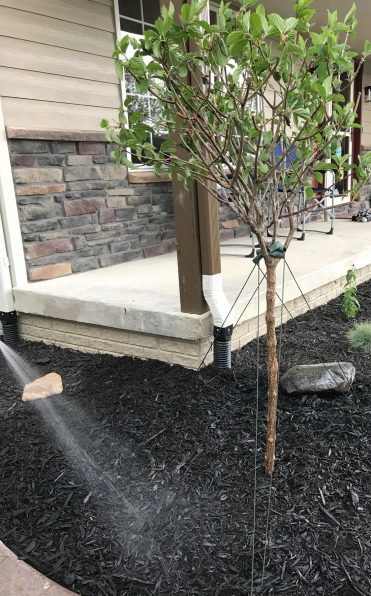
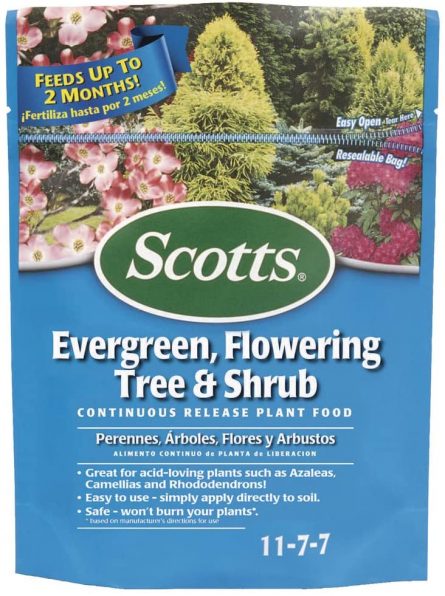
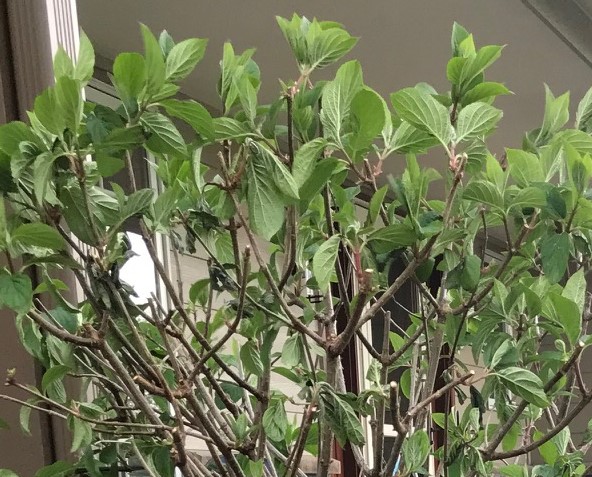

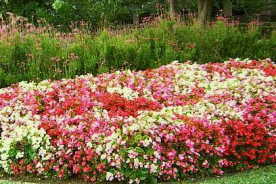
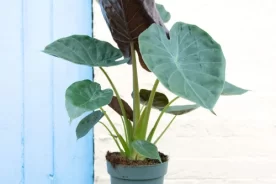
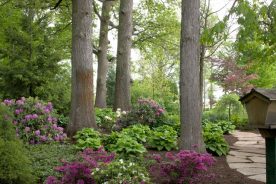

No Comments